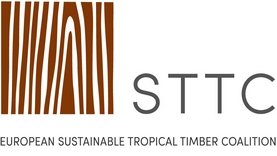Broadening horizons for tropical timber
The outcome of ten years of civil engineering application testing of a range of certified lesser used sustainable tropical hardwoods at a marina facility in the Netherlands will be released soon.
The evaluation forms part of a continuing programme to performance test tropical species in order to widen their application and increase the range of lesser used species (LUS) in the European market. Funding is from FSC Netherlands and the Dutch Ministry of Infrastructure and Water, with financial contributions from Van Swaay Harlingen BV, GWW Houtimport BV and Precious Woods Europe BV who also provided part of the timber in 2009.
The assessment was undertaken by the Stichting Hout Research (SHR, a testing and knowledge institute for o.a. timber) at the Houtexpo duurzame waterbouw site (Sustainable wood for waterways expo) in Akkrum. The latter was established in 2009 and forms part of a working marina, so the material is effectively tested in real life situations.
Some of the timber has been evaluated in water contact, with a view to use in such applications as pile planking, with other types tested in different forms, such as decking and beams. A particular focus was to test the various hardwoods in applications where they are currently not generally used.
Among the more than 20 species involved in the project, which also included some temperate varieties, are Muiracatiara, Sapupira, Angelim da Campina, Fava Amargoza, Acariquar, Gindya udu (Tanimbuca) and Manbarklak.
SHR undertook field evaluation of the timber in situ at the Houtexpo, comprising visual inspection and strength and resistance testing, followed by testing of samples at its laboratory.

